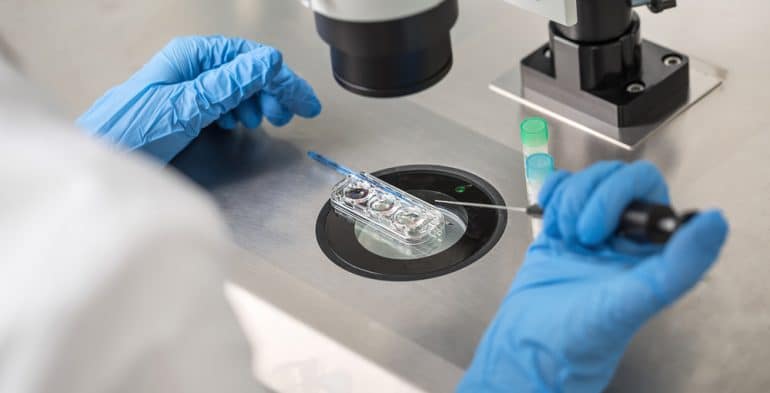
What is IVF?
In vitro fertilization (IVF) is one of several techniques available to help people with fertility problems have a baby.
During IVF, an egg is removed from the woman’s ovaries and fertilized with sperm in a laboratory. The fertilized egg, called an embryo, is then returned to the woman’s womb to grow and develop.
It can be carried out using your eggs and your partner’s sperm, or eggs and/or sperm from donors.
Speaking to your doctor about IVF
If you’re having trouble getting pregnant, you should start by speaking to your GP. They can advise on how to improve your chances of having a baby.
If these measures don’t work, your doctor can refer you to a fertility specialist for a treatment such as IVF.
What happens during IVF
IVF involves six main stages:
- Suppressing your natural cycle– the menstrual cycle is suppressed with medication
- Boosting your egg supply– medication is used to encourage the ovaries to produce more eggs than usual
- Monitoring your progress and maturing your eggs– an ultrasound scan is carried out to check the development of the eggs, and medication is used to help them mature
- Collecting the eggs– a needle is inserted into the ovaries, via the vagina, to remove the eggs
- Fertilizing the eggs– the eggs are mixed with the sperm for a few days to allow them to be fertilised
- Transferring the embryo(s)– one or two fertilized eggs (embryos) are placed into the womb.
Once the embryo(s) has been transferred into your womb, you’ll need to wait two weeks before having a pregnancy test, to see if the treatment has worked.
Chances of success
The success rate of IVF depends on the age of the woman undergoing treatment, as well as the cause of the infertility (if it’s known).
Younger women are more likely to have a successful pregnancy. IVF isn’t usually recommended for women above the age of 42, because the chances of a successful pregnancy are thought to be too low.
In 2010, the percentage of IVF treatments that resulted in a live birth was:
- 2% for women under 35
- 7% for women aged 35-37
- 8% for women aged 38-39
- 6% for women aged 40-42
- 5% for women aged 43-44
- 9% for women aged over 44
Maintaining a healthy weight and avoiding alcohol, smoking and caffeine during treatment may improve your chances of having a baby with IVF.
What are the risks?
IVF doesn’t always result in pregnancy, and it can be both physically and emotionally demanding. You should be offered counseling to help you through the process.
There are also a number of health risks involved, including:
- Side effectsfrom the medications used during treatment, such as hot flushes and headaches
- Multiple births (such as twins or triplets)– this can be dangerous for both the mother and the children
- An ectopic pregnancy– where the embryo implants in the fallopian tubes, rather than in the womb
- Ovarian hyper stimulation syndrome (OHSS)– where too many eggs develop in the ovaries









